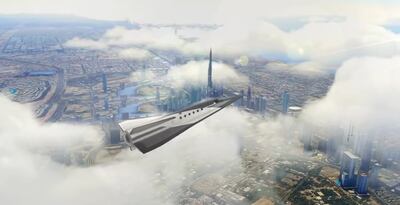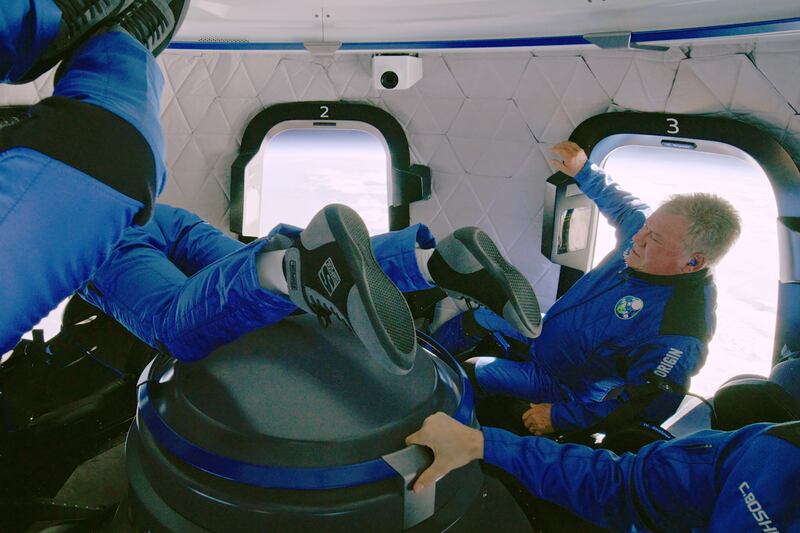Flights that briefly enter space could become widely available in a “number of years”, offering passengers the chance to fly from London to Sydney in under two hours.
The UK’s Civil Aviation Authority is investigating the effects of suborbital flights, which reach space but do not move quickly enough to stay there.
Instead, the flight will get to an altitude of around 100km before descending back down to its destination.
Seats on suborbital flights cost around £350,000 on Virgin Galactic at the moment, but are expected to become cheaper over time, making the option available to most eventually. There are several suborbital flight providers, including Blue Origin.
“Commercial suborbital space flights are now available for tourism and scientific research, and are ultimately anticipated to mature into extremely fast point-to-point travel, eg London to Sydney in less than two hours,” said a study published in the journal Aerospace Medicine and Human Performance.
The journey currently takes about 22 hours.
The research, conducted by King's College London and the RAF, studied the effects of suborbital travel on health.
Dr Ross Pollock, a lecturer in aerospace physiology at King’s, told The National the experience of suborbital flight was “nothing like what you would experience during a normal flight”.
There are two types of suborbital flight. One is a vertical launch from the ground and the other involves a spaceplane, where a spacecraft is attached to the bottom of a modified plane and released at high altitude.
During a vertical launch, passengers feel the g-force from chest-to-back, “as you would if you accelerated very quickly in a car”, said Dr Pollock.
“However, the acceleration would be much higher, ranging from approximately two to four times Earth’s gravity and lasting for up to two minutes. This will make your breathing feel harder but it will still be tolerable for most people.”
The effects of the second type of launch, from a spaceplane at high altitude, would be stronger for some.

Dr Pollock said: “With this launch you would also get the chest-to-back g-force but there would also be g-force in the head-to-foot direction (as fast jet pilots would experience) which would peak at 3.5 to four times Earth's gravity.
“This type of acceleration will, in many people, result in some visual changes where you lose some peripheral vision or have what we call grey-out where you start losing colour in your vision. In our research we also had one person lose consciousness.
“These changes occur because the blood is being forced away from your head and there isn’t enough oxygen getting to your eyes and brain. Fortunately these changes are very short — a matter of seconds — and as soon as the acceleration starts getting lower you will have full recovery and no lasting effects.”
The effects would occur on both launch and re-entry, said Dr Pollock.
They would both include a period of weightlessness similar to that experienced by astronauts, except, for them, it lasts only a few minutes.
“It would be much longer if you were to use if for travelling around the world,” Dr Pollock said.
He said his colleague, Prof Tom Smith, had been studying who should and should not fly on suborbital flights, in research funded by the CAA.
“We have found that the g-force you experience during suborbital flight is well tolerated in healthy individuals up to the age of 80 years old and the physiological response is relatively benign,” he said.
“Assuming someone has relatively good health they are likely to be able to take a suborbital flight, although further research is needed to determine whether this is the case for people with underlying health conditions.”
Dr Pollock said suborbital flights were likely to become widely available “a number of years” from now. Commercial suborbital spacecraft currently only have the capacity to perform short flights, lasting no more than 10 to 15 minutes with six people on board.
“To be able to do this as a form of transport for the general population will require a lot of development of the spacecraft and launch capabilities,” he said.
Dr Pollock said the cost will initially be expensive, but will come down over time.
Once suborbital travel is more widely available, it may even become standard for long-haul flights.
“But it will require much larger spacecraft allowing greater numbers of people to travel on a single flight,” added Dr Pollock.
Last year, a Chinese start-up announced it was developing a hypersonic spaceplane that will carry passengers from one country to another with suborbital flights. It could travel from Beijing to Dubai in an hour, instead of the nine hours it takes on a normal aircraft.
The spaceplane will take off vertically and can go up to speeds of 10,000kph, as it travels 7,000km across the edge of space and over to the Middle East in only 60 minutes.







